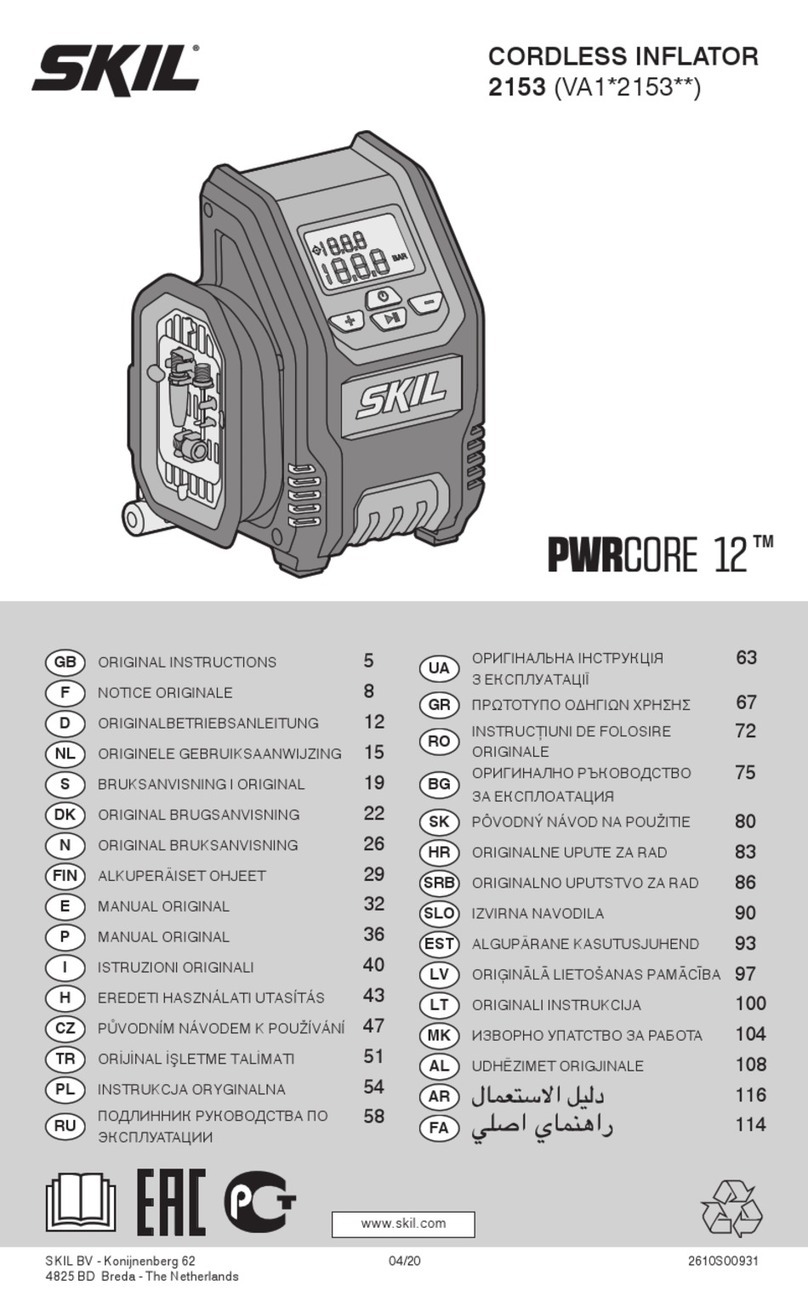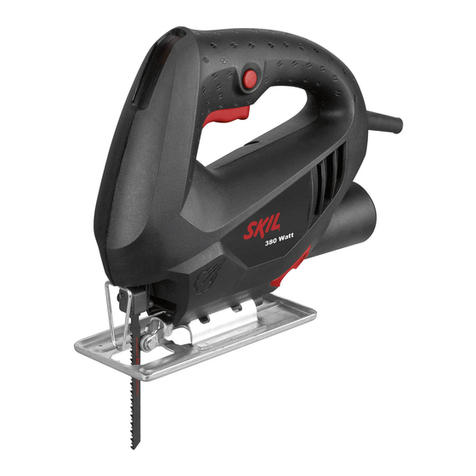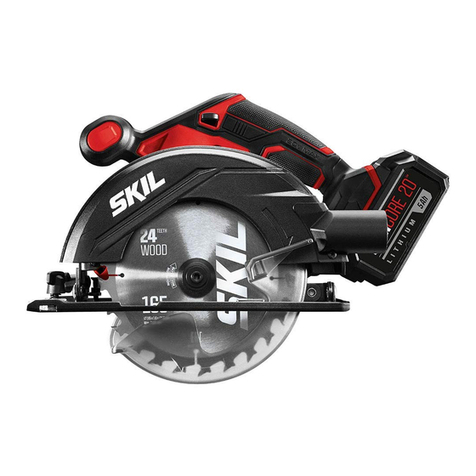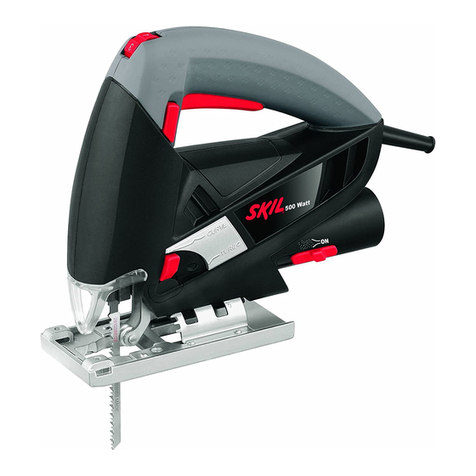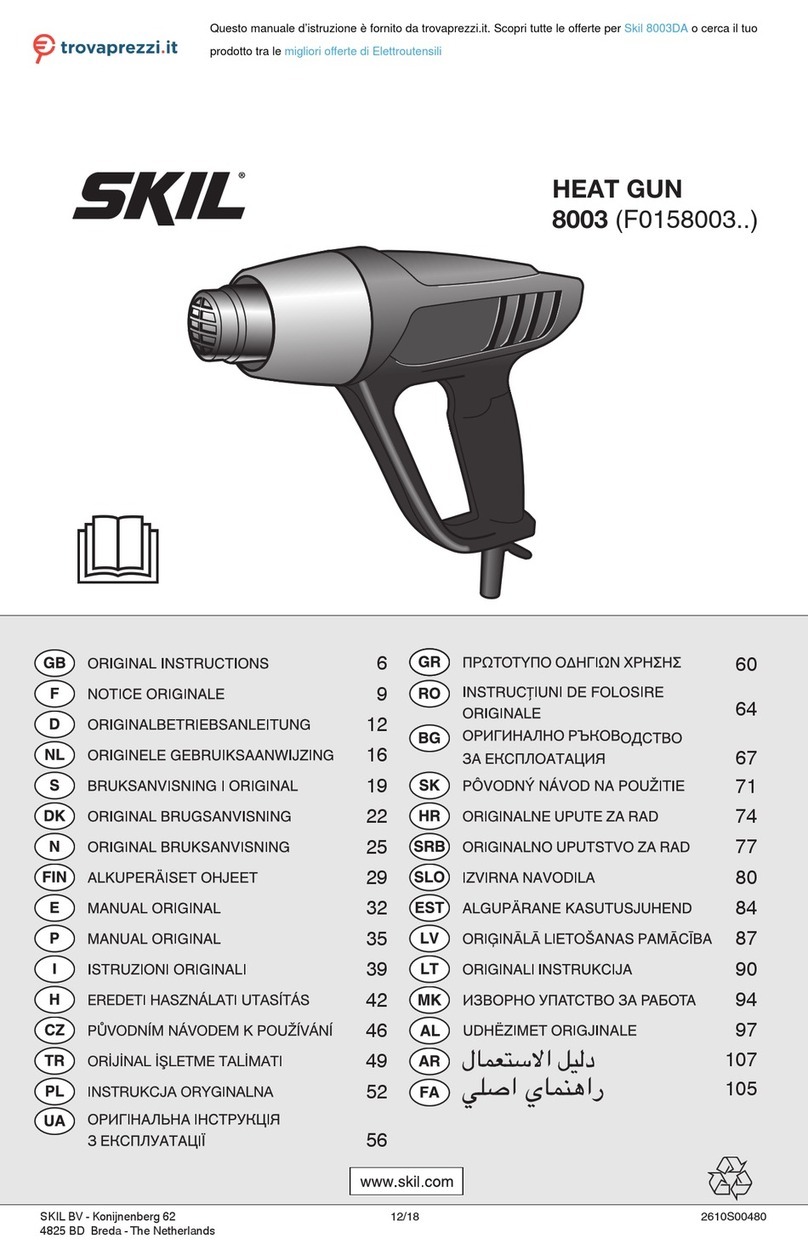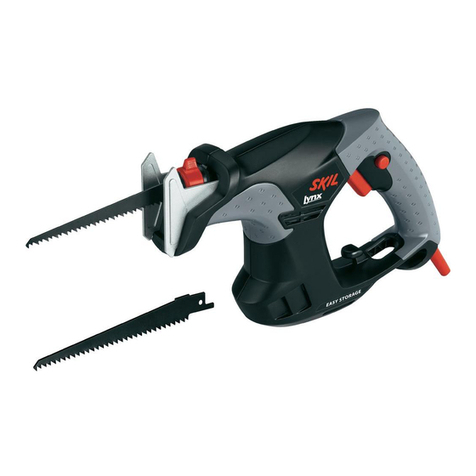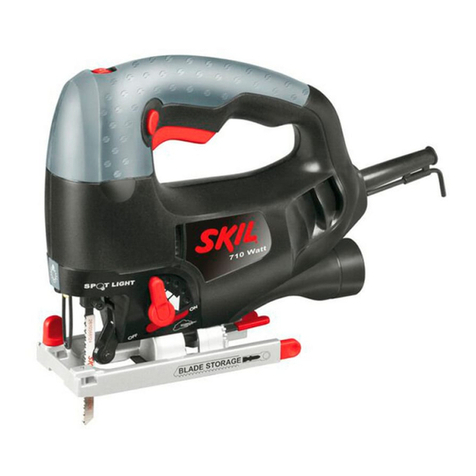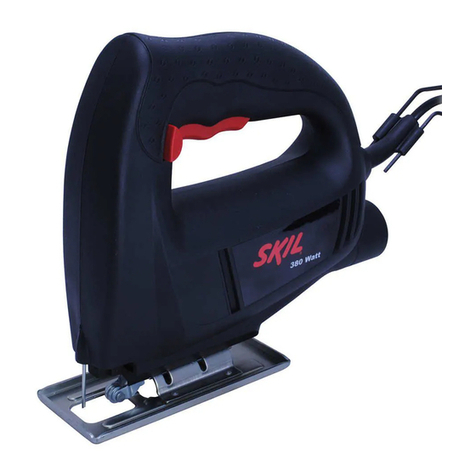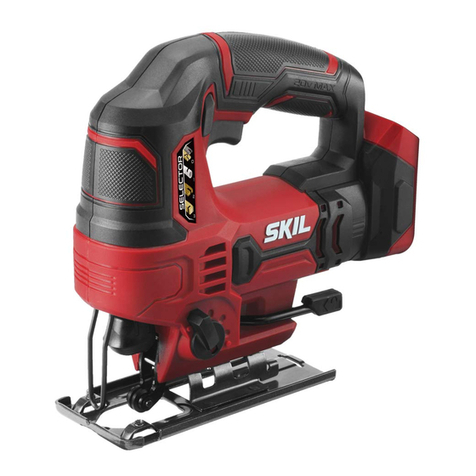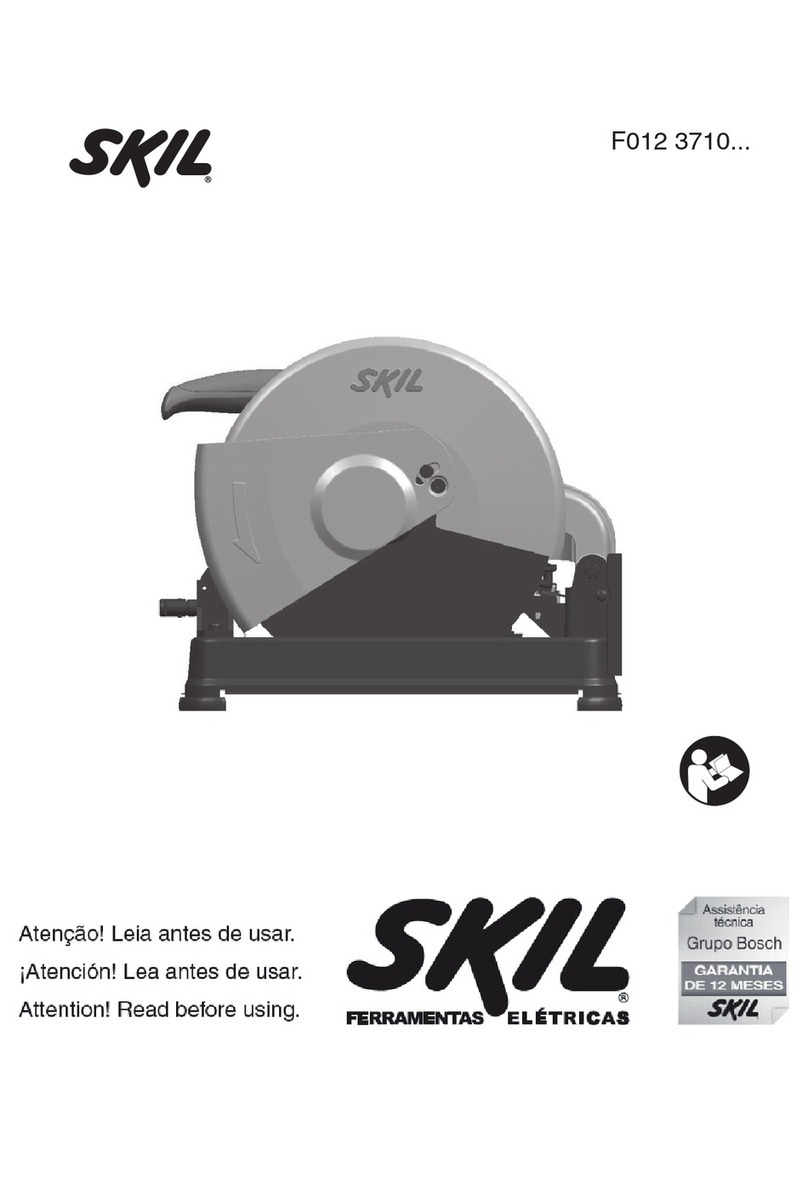d) Store idle power tools out of the reach of children and
do not allow persons unfamiliar with the power tool or
these instructions to operate the power tool. Power
toolsaredangerousinthehandsofuntrainedusers.
e) Maintain power tools. Check for misalignment or
binding of moving parts, breakage of parts and any
other condition that may affect the power tool’s
operation. If damaged, have the power tool repaired
before use. Many accidents are caused by poorly
maintained power tools.
f) Keep cutting tools sharp and clean.
Properly maintained cutting tools with sharp cutting
edges are less likely to bind and are easier to control.
g) Use the power tool, accessories and tool bits etc.,
in accordance with these instructions, taking into
account the working conditions and the work to be
performed.Useofthepowertoolforoperations
differentfromthoseintendedcouldresultina
hazardous situation.
5) SERVICE
a) Have your power tool serviced by a qualified repair
person using only identical replacement parts.
Thiswillensurethatthesafetyofthepowertoolis
maintained.
SAFETY INSTRUCTIONS FOR HEAT GUNS
BEFORE USE:
• Checkthefunctioningofthetoolbeforeeachuseand,
incaseofadefect,haveitrepairedimmediatelybya
qualiedperson;neveropenthetoolyourself
• Inspecttoolcordandplugbeforeeachuseand,if
damaged,havethemreplacedbyaqualiedperson
• Usecompletelyunrolledandsafeextensioncordswith
acapacityof16Amps(U.K.13Amps)
• Inspecttheextensioncordperiodicallyandreplaceit,
ifdamaged
• OnlyusetheoriginalSKILaccessoriessuppliedwith
the tool
• Usethetoolanditsaccessoriesinaccordancewiththis
instructionmanualandinthemannerintendedforthe
tool;useofthetoolforoperations,differentfromthose
normallyexpectedtobeperformedbythetool,could
result in a hazardous situation
• Thistoolshouldnotbeusedbypeopleundertheageof
16 years
• Thistoolisnotintendedforusebypersons
(including children) with reduced physical, sensory
or mental capabilities, or lack of experience and
knowledge, unless they have been given supervision
or instruction concerning use of the tool by a person
responsible for their safety
• Alwayscheckthatthesupplyvoltageisthesameasthe
voltageindicatedonthenameplateofthetool
• Besuretoolisswitchedoffwhenpluggingin
DURING USE:
• Handlethetoolwithcare;preventfireandburns
- do not touch the air outlet/nozzle and the heated
object; they become extremely hot
- do not hold the air outlet/nozzle too close to the
object to be worked on
- do not direct the hot air flow towards the same
surfacefortoolong
- neverlookdowntheairoutlet/nozzle
- wearprotectiveglovesandusesafetyglasses
- neverdirectthehotairowtowardspersonsoranimals
- neverusethetoolfordryinghair
- donotleavethetoolunattended
- neverusethetoolintheproximityofinammable
gases or combustible materials (risk of explosion)
- whenworkingwithplastic,paint,varnishandsimilar
materials,inammableandpoisonousgasesmaybe
produced;informyourselfbeforehandaboutthe
materials to be worked on
- takeintoaccount,thatheatmaybetransferredto
combustiblematerialsoutofeyesight
- tobeonthesafeside,haveabucketofwaterorare
extinguisherhandy,incaseanymaterialcatchesre
• Preventelectricalshock
- neverpokeanythingdowntheairoutlet/nozzle
- avoidbodycontactwithearthedsurfaces(e.g.pipes,
radiators,ranges,refrigerators)
- ensure the tool does not get wet
- do not use the tool in damp locations
- whenusedoutdoors,connectthetoolviaafault
current(FI)circuitbreakerwithatriggeringcurrentof
30mAmaximum,andonlyuseanextensioncord
whichisintendedforoutdooruseandequippedwith
asplashproofcoupling-socket
• Handlethecordwithcare
- alwayskeepawaythecordfromthehotairowand
the air outlet/nozzle
- keepthecordawayfromheat,oilandsharpedges
- donotcarrythetoolbythecord,anddonotyankthe
cordtodisconnectitfromthesocket
- do not suspend the tool by the cord
• Neverusethetoolinconjunctionwithchemicalsolvents
• Makesureworkareaisadequatelyventilated
• Keepworkareacleanandwelllit
• Keepchildrenawayfromworkarea
• Ensurethatchildrendonotplaywiththetool
• Inrushcurrentscauseshort-timevoltagedrops;under
unfavourablepowersupplyconditions,otherequipment
maybeaffected(ifthesystemimpedanceofthepower
supplyislowerthan0,127+j0,079Ohm,disturbances
areunlikelytooccur);ifyouneedfurtherclarication,
you may contact your local power supply authority
• Stayalert;watchwhatyouaredoing,usecommon
sense and do not operate the tool when you are tired
• Takeasecurestance;donotoverreach,especiallyon
ladders and stages
• Ensurethatthetoolisswitchedoff,beforeputtingitaside
• Incaseofelectricalormechanicalmalfunction,
immediatelyswitchoffthetoolanddisconnecttheplug


